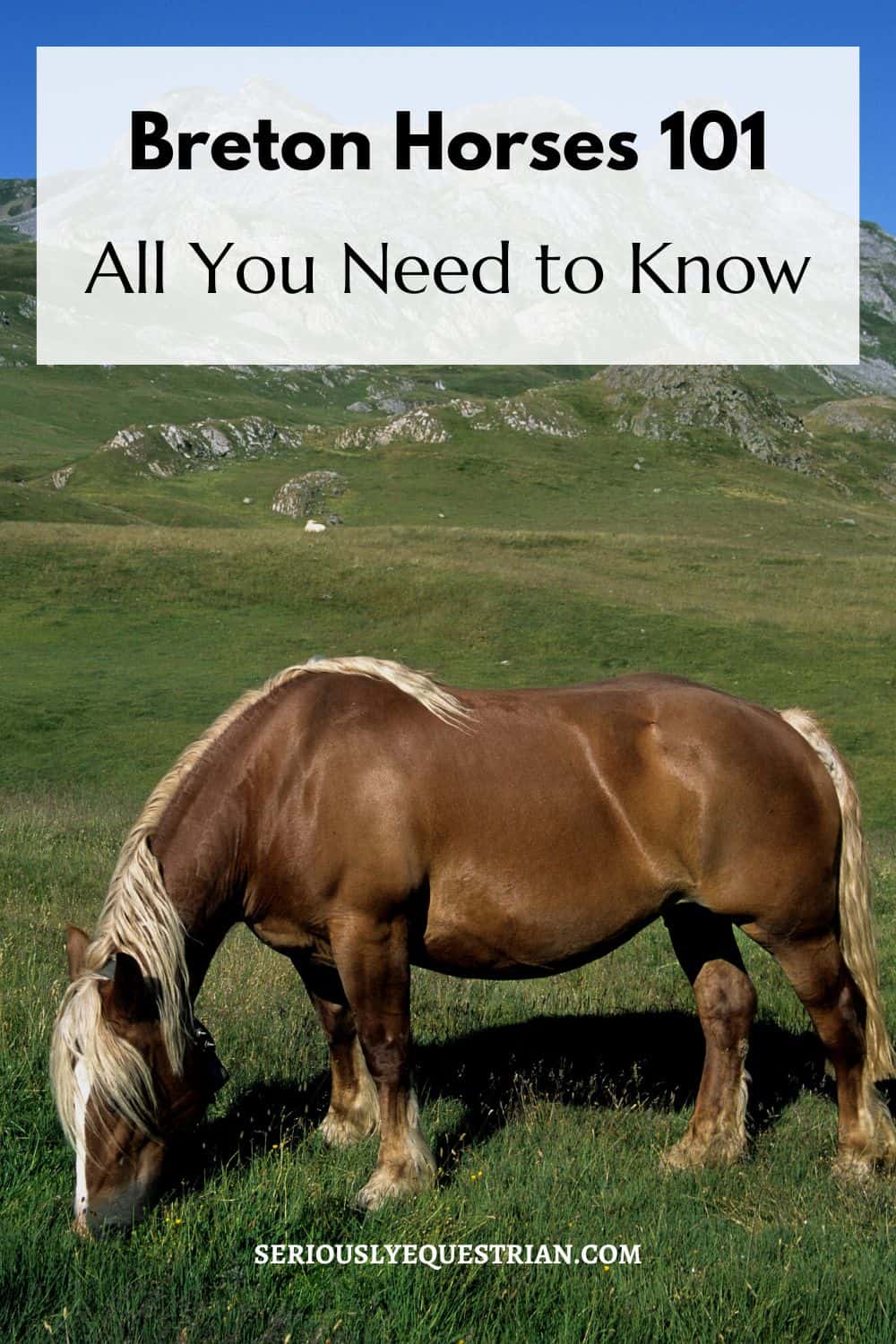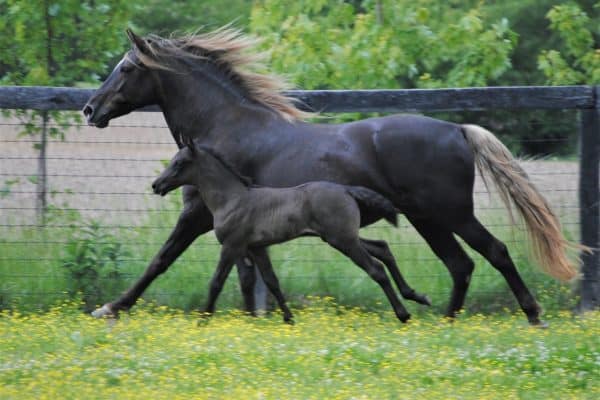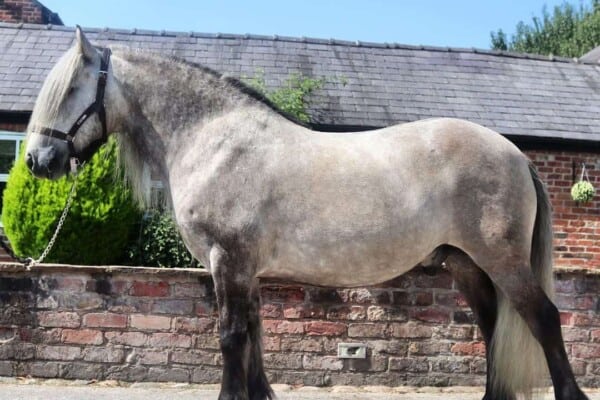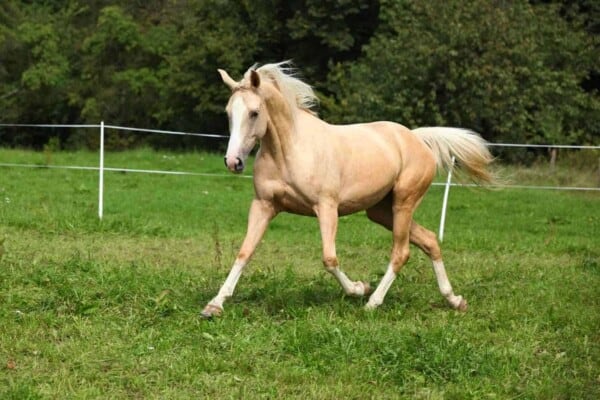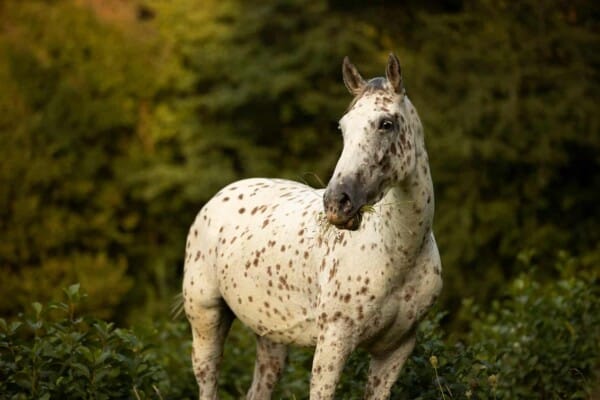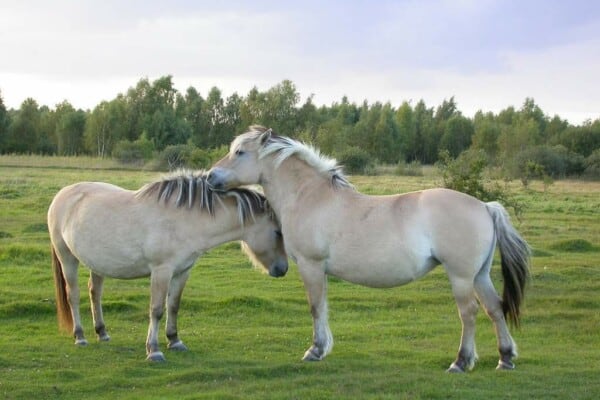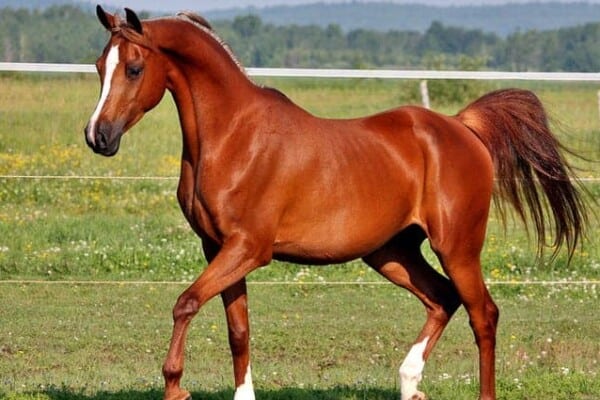They say that size doesn’t matter, and we totally agree with that statement after seeing the beautiful Breton horse breed in all its glory.
They’re not even close to being one of the largest horse breeds around, quite the contrary actually, since Breton horses may very well be one of the smallest draft horse breeds you’ll see.
Even so, the Breton horse is still considered one of the strongest horse breeds out there, while also being one of the most versatile options you may have on the open market.
Regardless of whether you’re looking for a horse to pull your cart around or if you want to ride these beauties all day long, the Breton horse will do its job perfectly no matter what.
So, because of this we decided to bring you a little more insight into this wondrous horse breed right here, so in today’s article we will provide you with a guide on everything you need to know about the Breton horse, starting off with:
The History and Origins

While nobody knows exactly how the Breton horse came into being, the most popular theory about them is that they were originally brought into Europe during the Aryan migration from Asia.
That would mean that the Breton’s origins start as far back as 4,000 years ago, but that’s not the only popular theory about them. Some experts believe that they could have also been bred directly by Celtic warriors right before the great conquest of Great Britain.
What we do know however is that the original Breton horses lived in the Breton mountains, and they were direct descendants of the mountain horses that were crossed with oriental horses.
This cross led to the original Bidet Bretons, and they were quickly employed as military horses due to their comfortable gaits and humongous size.
After they were brought to Europe though things too a sudden turn for the Bretons as they found their genes spreading into two different types of horses, specifically the Sommier and the Roussin type.

The Sommier was by far the most popular type out there, with it being the heavier and better suited for a draft horse type.
Roussin on the other hand was a lighter and sturdier horse type that was mostly used in war activities and longer journeys.
But this wasn’t the final form the Breton horse would take as by the end of the 1900s, the Arabian and Thoroughbred blood would be successfully added into the breed, leading to another separation of genes to happen.
This is why today there are a total of three breed subtypes out there that are constantly regulated by the Syndicat des Eleveurs de Cheval Breton. These are the only three subtypes that are considered to be purebred, every other alteration to the main breed is not recognized by them.
Breeding is still done a lot in France, but ever since 1951 there haven’t been any changes made to the official studbook, nor do we believe any will be made anytime soon either.
Breton Horse Characteristics
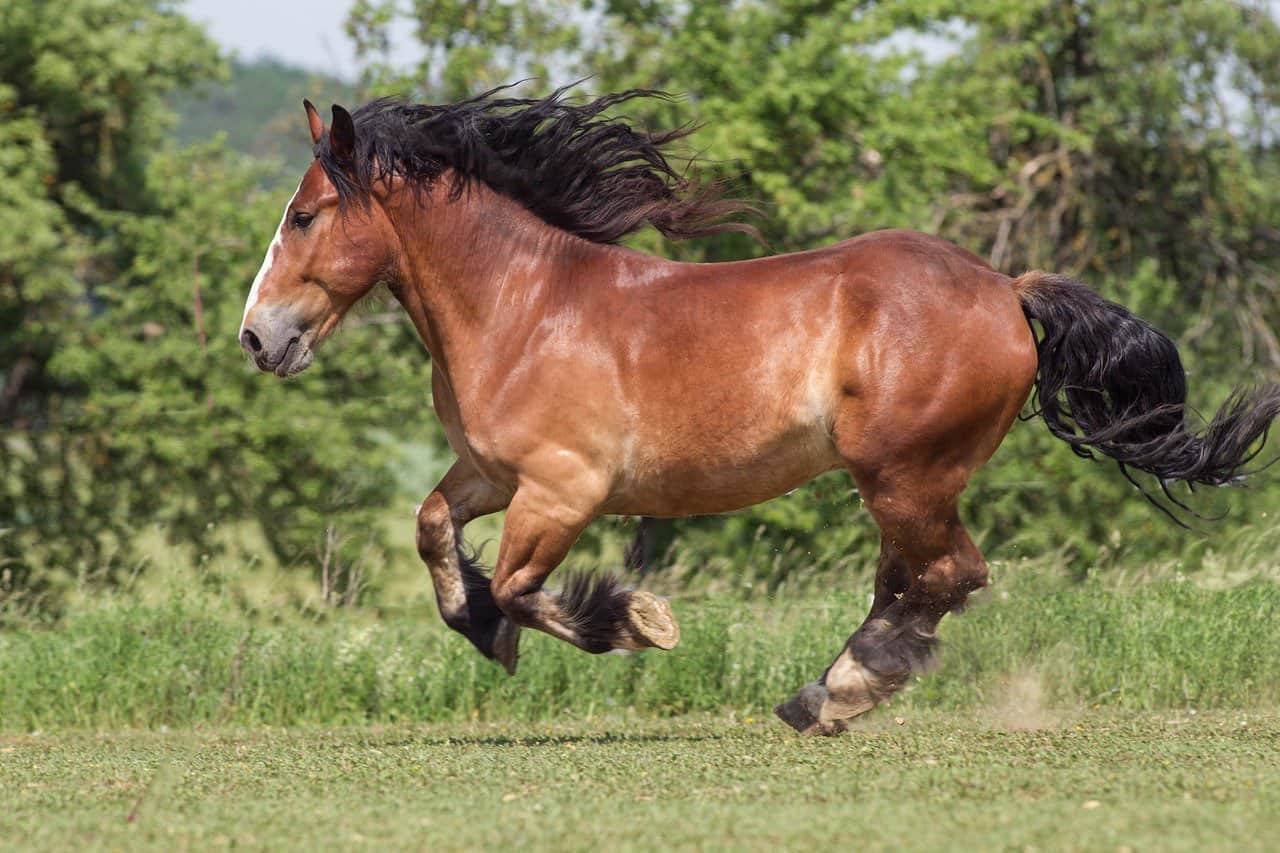
As far as the general distinguishing characteristics of this breed are concerned, you can expect your Breton horse to have a fairly large head, alongside a massive and expressive pair of eyes.
In these eyes you can tell just how intelligent this breed is, as they can read any and all of your emotions and react accordingly. They also have unusually wide nostrils and a fairly big forehead which makes their head to body ratio look disproportionate.
For the most part, your Breton horse will have a flat profile, although every now and then you will find your horse also having a more dished face. Their ears on the other hand are small and quite shapely.
Due to their smaller size though, Breton horses also have rather short and stuffy necks that showcase just how strong and sturdy they are on their feet. Their shoulders are very long and muscular and they have a very strong, short and wide back.
Their ribcage is unusually large and round too and they do have a double croup alongside their most muscular feature, aka their legs.
General size wise, while there were talks about enhancing the breed’s size over the years, the breeders instead opted to maintain the breed’s original size and try to enhance its other characteristics instead.
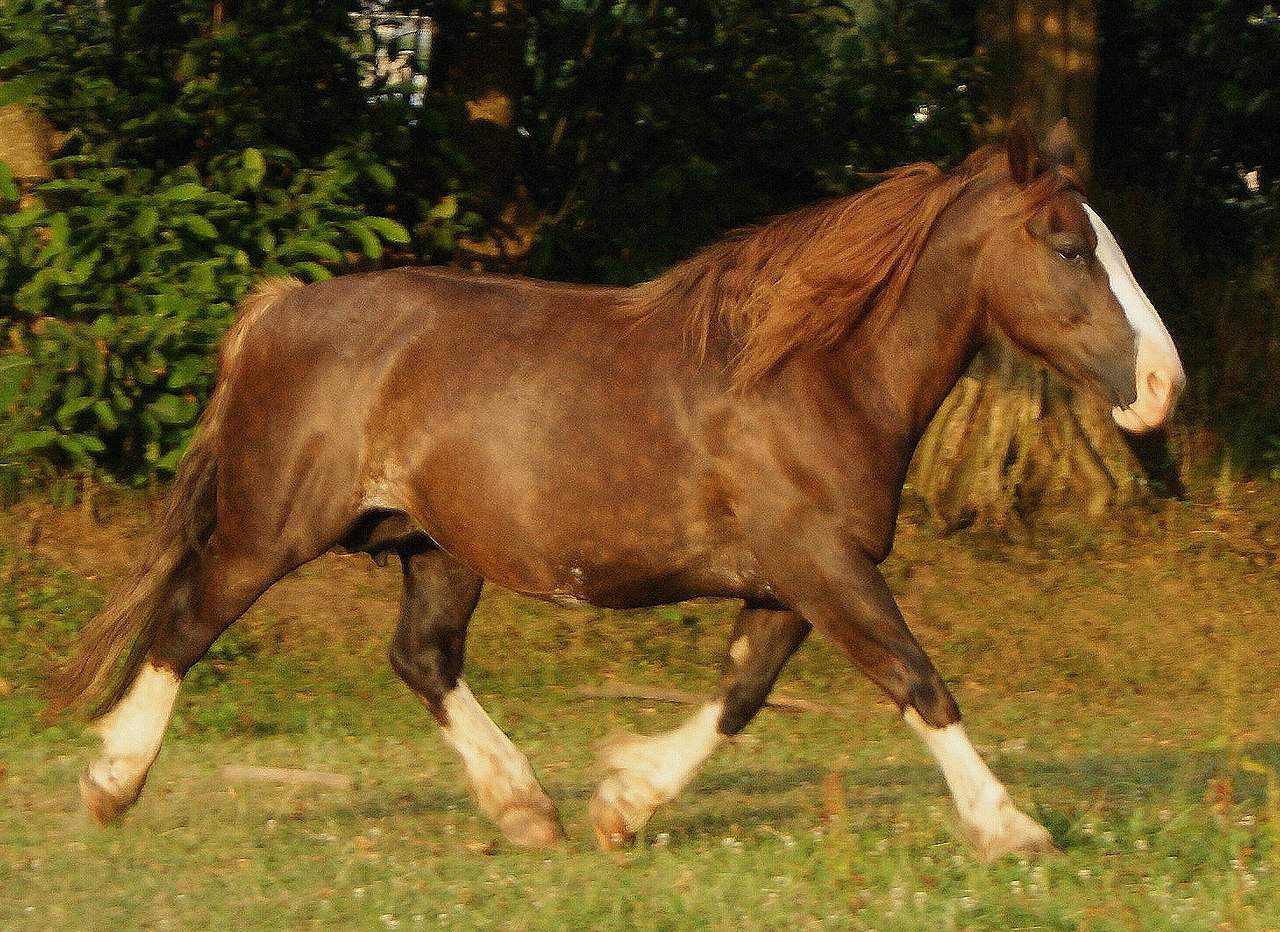
Although, depending on which of the Breton horse sub-type you go for, you may be surprised by the difference in size alone. For example, some adult Bretons can be as tall as 15-16 hands, which is 60 to 64 inches, while others can be as small as 14.3 hands tall.
Weight wise, a Breton horse can weigh anywhere between 1,250 and 1,700 pounds, with the Corlay Breton being by far the lightest type while the Heavy Draft Breton is the heaviest.
As you can probably tell by now, the taller the horse, the heavier it will be, which is why while they are still considered to be draft horses, Breton horses are nowhere near as large as other draft horse breeds.
Interestingly enough though, despite being on the smaller side, Breton horses are also incredibly strong, even outpowering a lot of the other, larger and more muscular heavy draft horses around.
You can expect your Breton horse to grow up until it reaches its third year, after which it will stop and instead start producing more and more muscle, becoming stronger over the next couple of years until they reach their peak.
They will also stop growing any taller by age five, which isn’t too bad considering the fact that by that time they already outpowered most other horses around.
Appearance and Colors
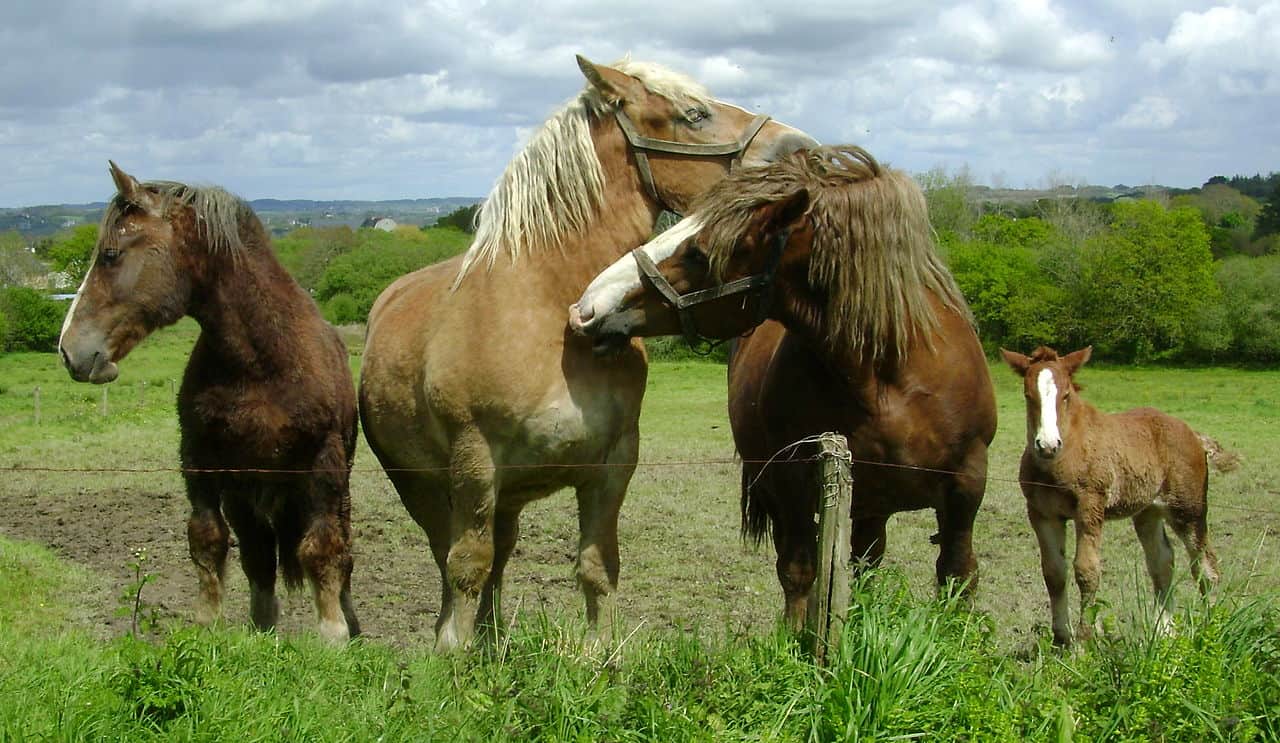
For the most part, your Breton horse should be chestnut colored, although there are quite a few other colors that are recognized by the association too, them being:
- Flaxen chestnuts with a white mane and tail
- Red roan
- Bay
You may also find black and blue roan Breton horses out there, but these colors are very rare and hard to come by, so don’t go out expecting to find them that easily.
The blue roan is technically just a patten of black and white hairs which makes them appear blue to the untrained eye, but the closer you look at them the easier it will be to spot the difference.
No matter which Breton horse you go for though, your Breton horse will always have white markings on it, since that is a characteristic trait that the breed carries.
Another aspect that makes them very popular is the fact that they often have a star or a blaze on their face alongside white socks which can either be limited to the hooves alone or they can go as far as right below the knees.
Temperament
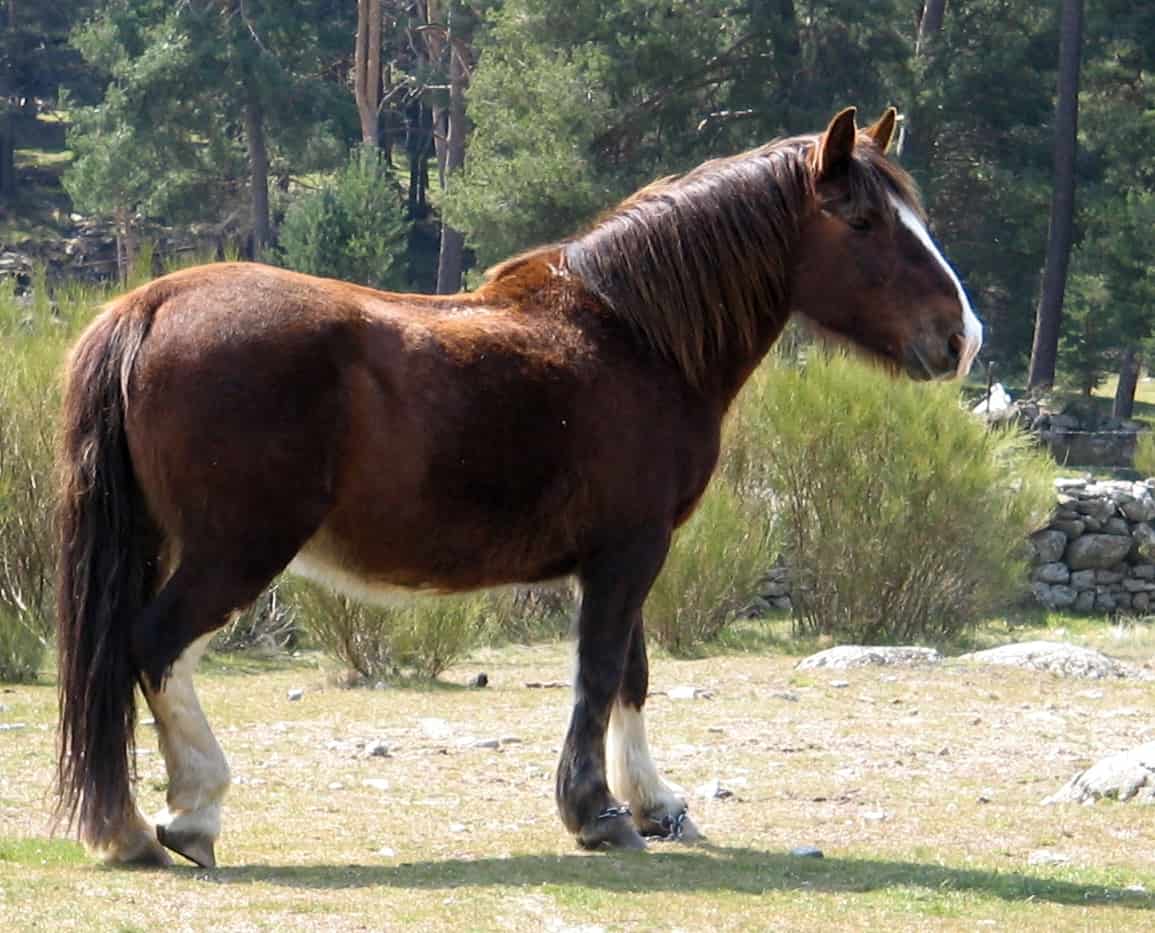
Despite being a draft horse, aka a subtype of a horse that isn’t exactly known for being the best with children, the smaller size and gentleness of the Breton horse does make them good enough to be left alone with children.
They are perfectly kind and calm no matter the situation, and because of how pure their lineage is, they are the perfect companion for families that just want a strong horse to help around the farmhouse without ever fearing that they might lose control
Although their original purpose was to help with agricultural work by either pulling carriages around or by just delivering mail around, they are also very good with every other task you may have in mind since they learn very quickly and are very easy to train in general.
As such, many people get themselves Breton horses for recreational purposes, and since they do have a very comfortable gait, they are also amazing when it comes to being ridden around all day long.
While children are not allowed to ride stallions, according to the general rules of the US Equestrian Federation, they can still play around with Breton foals if they want to and even ride them around.
Common Health Problems
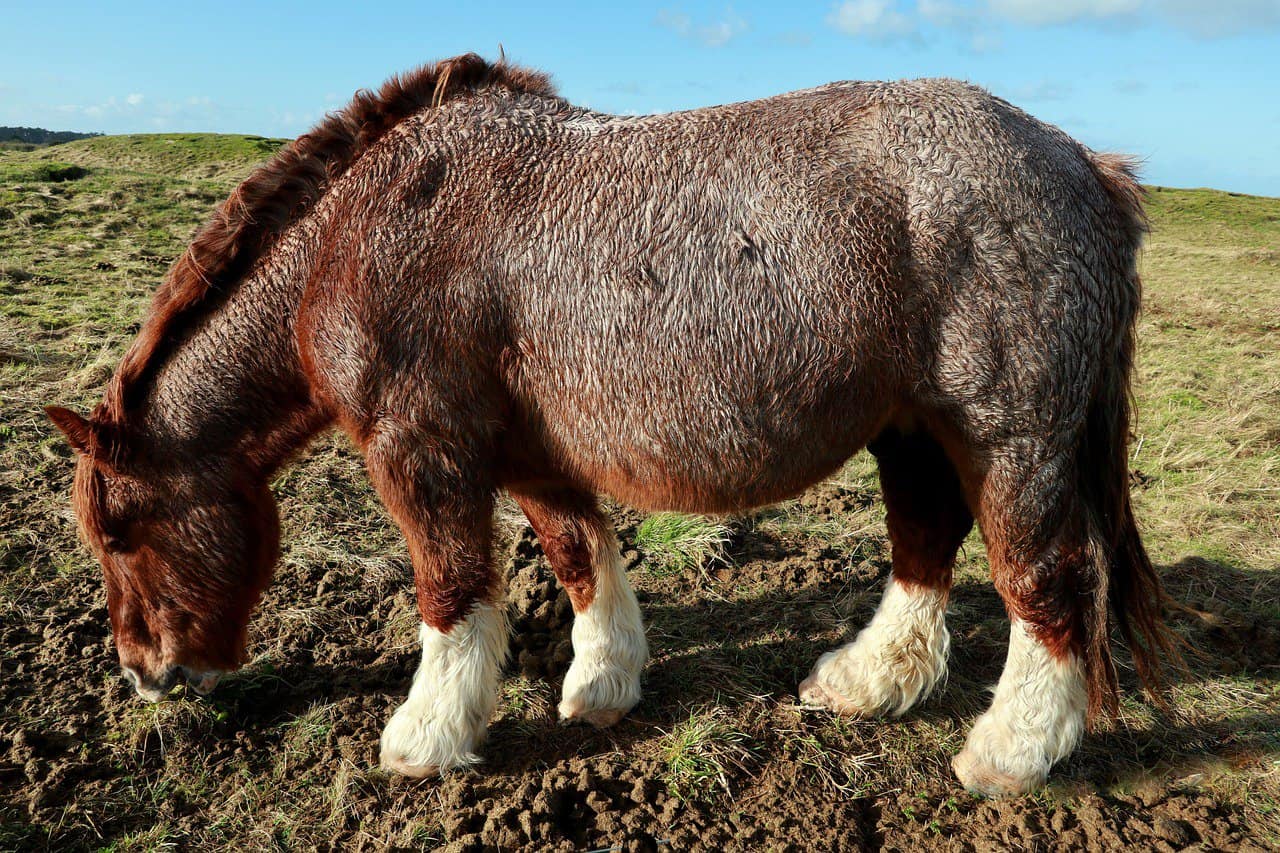
While there are no specific Breton breed health problems that you do need to keep in mind, you should be on the lookout for a few health issues that come with most draft horse breeds around, specifically the following:
- Equine Polysaccharide Storage Myopathy – This disease causes the horses to be unable to properly metabolize starch and sugar. This in itself causes muscle imbalances, weakness and wasting. There is no known cure to this disease.
- Shivers – If the horses are pushed to their limit, they may start to exhibit Shivers symptoms, which include jerking and trembling motions of the hind legs. This is a chronic disease which can never be fully cured, although its symptoms can be made more manageable through massaging.
- Scratches – This is basically feathering on the legs of the horse as they trap moisture and dirt around the skin, making it very hard for them to move properly. This can easily be avoided however by grooming your horse regularly.
Breton Horse Grooming
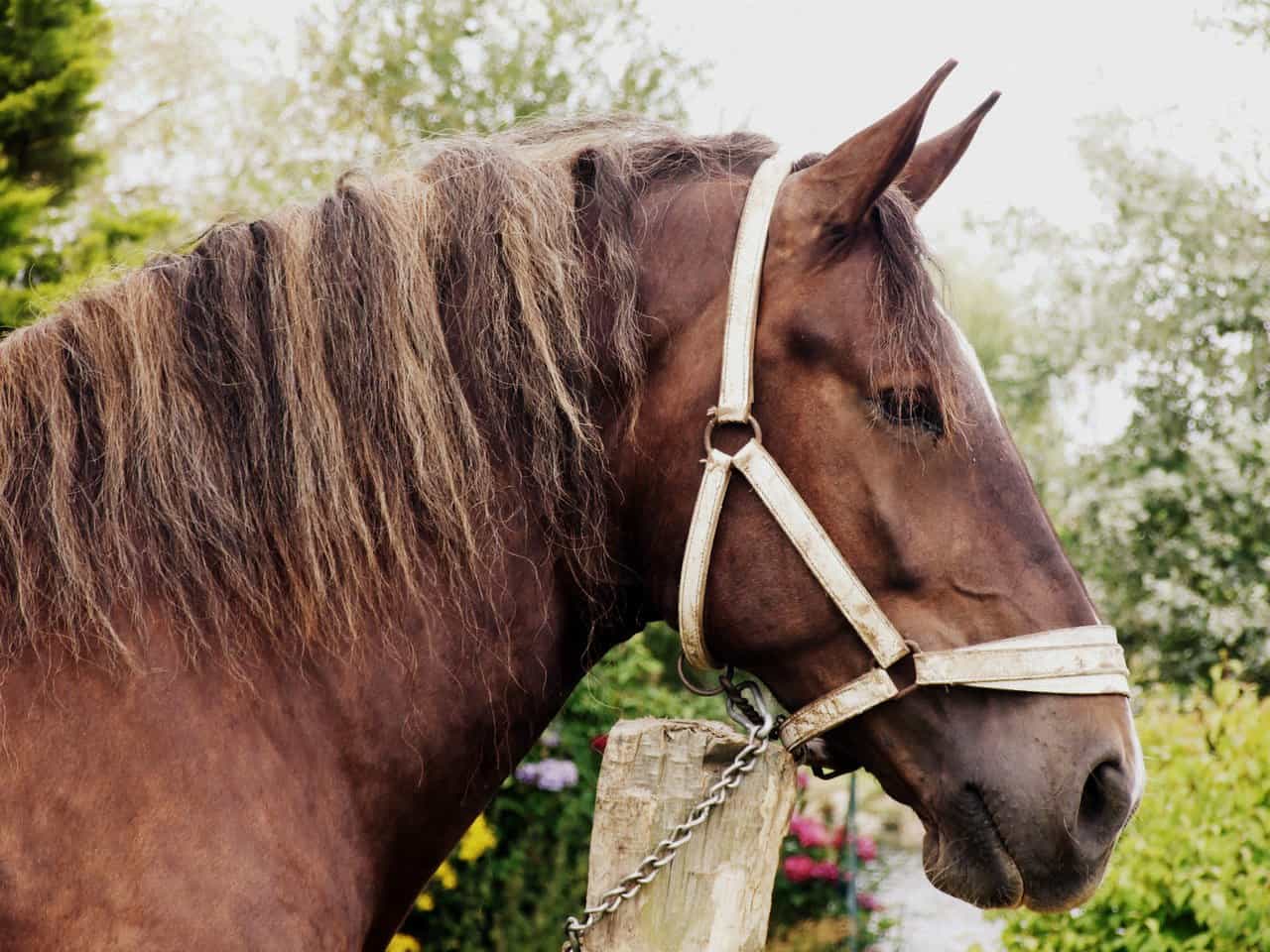
Since we did mention grooming as being one of the most important tasks on your list as a Breton horse owner, how about we now explain to you what you need to know about it before you actually get your hands on a Breton horse to begin with.
First of all, you should never consider grooming to be an arduous task that you need to do in order to keep your horse healthy. Grooming should be a bonding act between you and your horse, as you keep them clean and healthy and earn their trust in the process.
As is common with most other draft horses around, not grooming them enough or properly can easily lead to the Scratches disease making its appearance, which is why you shouldn’t ever miss out on a grooming appointment with your four-legged friend.
On top of that, grooming your Breton horse is especially important since it also gets rid of any painful back problems that your horse may or may not have.
You can use a simple curry comb, a mane and tail brush, a soft brush, a stiff brush and a finishing towel to get the job done, and don’t forget to also clean their hooves on a daily basis if you want to make sure that no infections come up anytime soon.
Breton Horse Uses
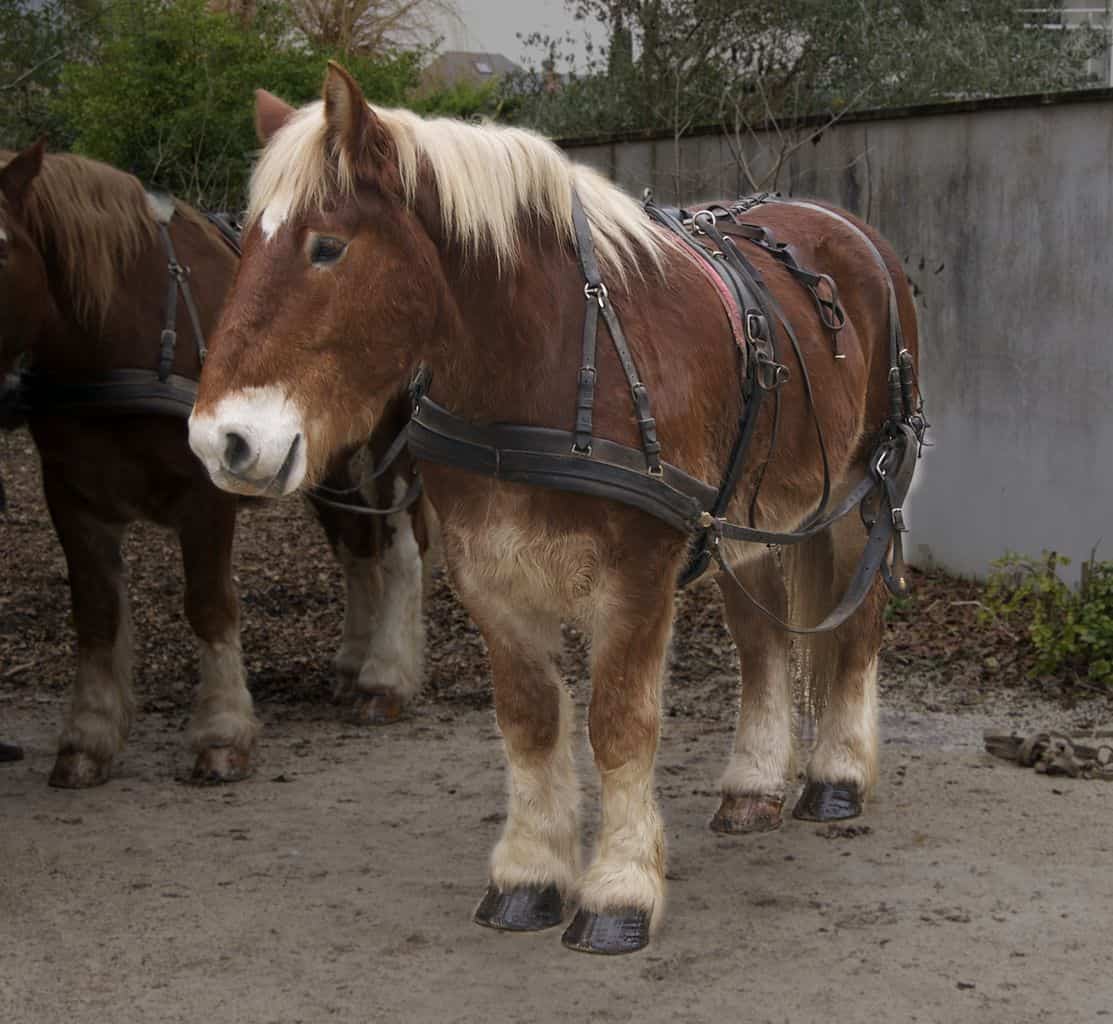
The Breton horse has quite a lot of functional uses that you can employ their services for, including agricultural work, pleasure riding, driving and of course, meat production.
Since this is a draft horse, you should already know by now that the Breton horse is especially good at pulling stuff and just helping around the farm a lot. This is why for the most part they are used for seaweed harvesting, since tractors aren’t really an option for the ocean surface.
As mentioned previously though, Breton horses are also very popular for recreational riding and driving, which is mostly due to their gait being especially light and energetic.
While the Bidet Breton is extinct by now, the gait is a trait that this horse breed has kept over the years, making today’s Bretons one of the most comfortable rides you will ever get
Are Breton Horses Common?

Nowadays, a total of around 2,300 Breton foals are registered into the association every single year, which means that while the breed is still nowhere near endangered yet, it is also not the easiest to come by either.
The majority of Breton horses that there are out there right now live in France, with thousands upon thousands of them having been spread out across the borders from 1940 to 1970 for the sake of crossbreeding it with other breeds.
This in itself was a bit of a failure since crossbreeding didn’t workout all that much, which is why there are so few registered horses around nowadays.
Interestingly enough, there are very few Breton horses around the US right now, but because they are featured in the game Red Dead Redemption 2, they gained a lot of traction as of late, with the demand for Breton horses increasing exponentially because of it.
How Much Will a Breton Horse Cost?
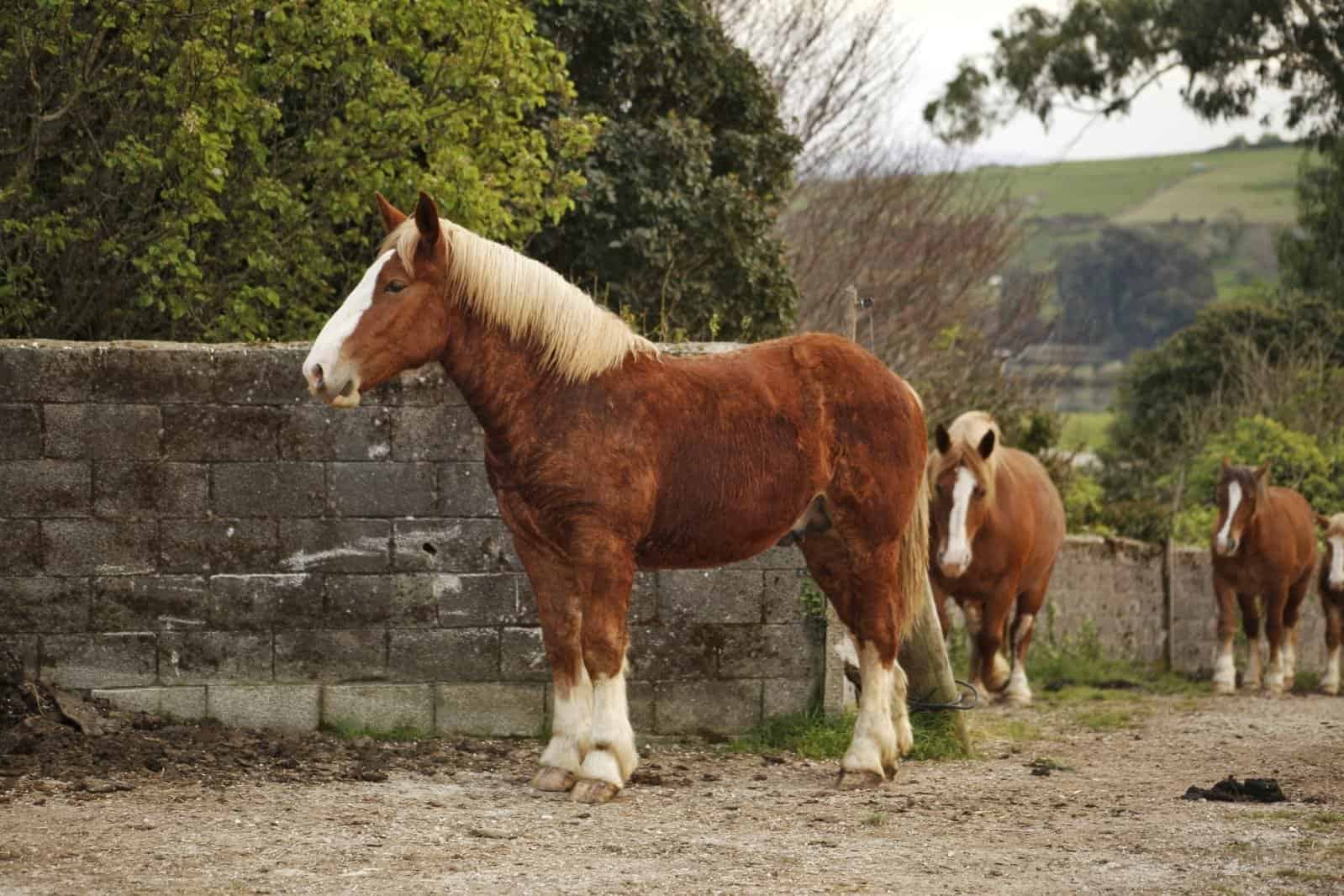
Horses are neither cheap nor easy to take care of, they require a lot of money, resources and time to raise them, before they can even be used around the farm.
As far as a general price is concerned, you will need to keep in mind that the age of the horse, its training, bloodlines and supply/demand will always be a major factor that you need to keep in mind.
For the most part though, if you want a young Breton, you should be able to get one for around $1,100 to $2,200, although if you are looking to get your hands on fully grown adult you may need to shill out twice as much for it.
The ownership costs should rake up to anywhere between $1,770 and $12,930 per year, while the shelter and pasture of the horse will cost you a bit over $1,200 to $7,200 on a yearly basis.
Feeding your horse will take around $250 to $4,380 per year and of course we can’t forget about the veterinary visits which can cost around $250 to $350 per year unless your horse goes through any particular accidents or injuries.
Last but not least, taking care of their most beloved asset aka their hooves will also cost you around $250 to $4,380 every year.
Conclusion

So, is the Breton horse the right breed for you? Honestly this all depends on you. Regardless of which subtype of Breton horse you get, you will surely get your money’s worth from it, just keep in mind that the expenses may start going through the roof if you don’t take proper care of it.
They are very gentle and beautiful creatures and they require a lot of attention so keep that in mind before you get yourself a Breton horse because they are social butterflies and they will start chasing you around the yard every time they see you if you treat them right.

